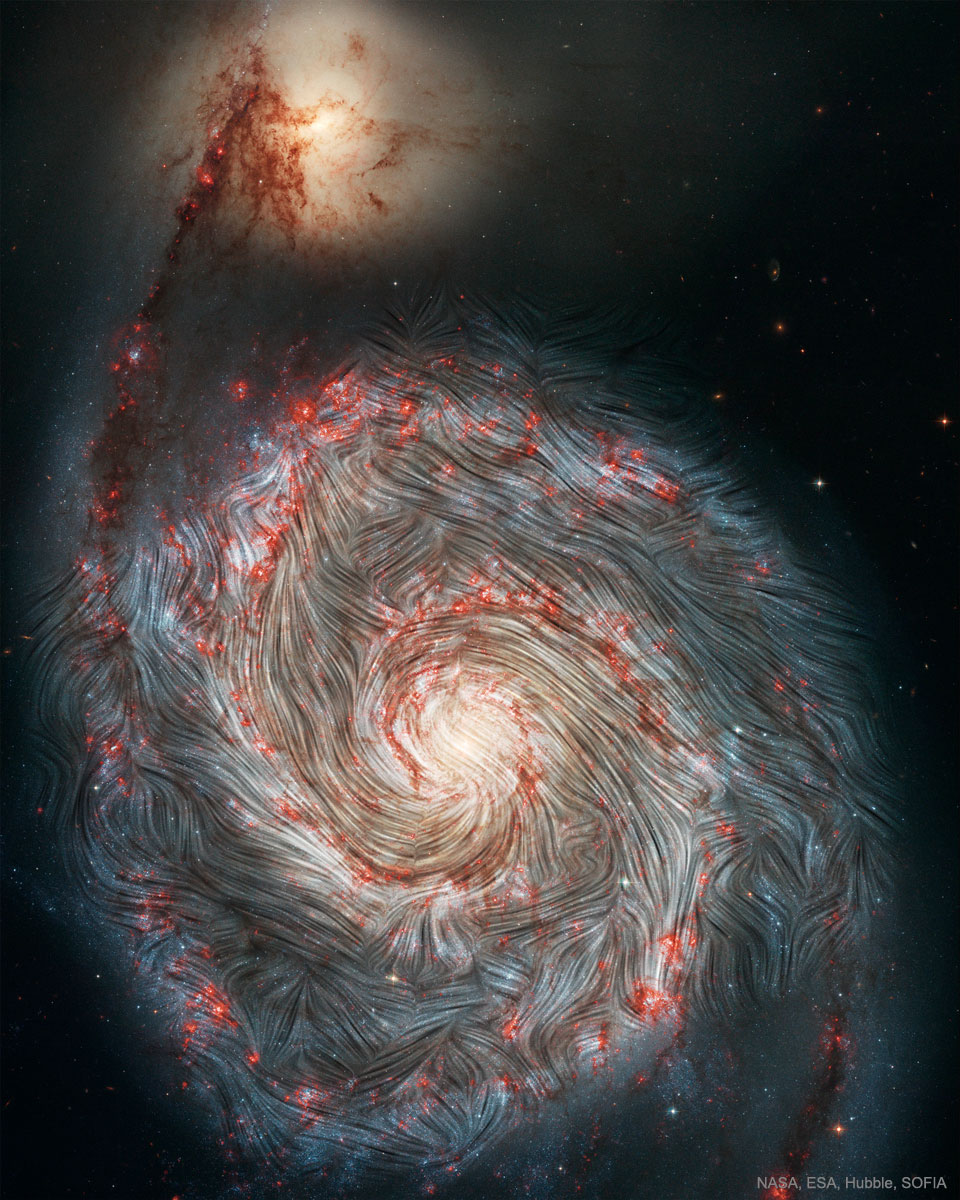2021年01月20日
The Magnetic Field of the Whirlpool Galaxy
Image Credit: NASA, SOFIA, HAWC+, Alejandro S. Borlaff; JPL-Caltech, ESA, Hubble; Text: Jayanne English (U. Manitoba)
Explanation: Do magnetic fields always flow along spiral arms? Our face-on view of the Whirlpool Galaxy (M51) allows a spectacularly clear view of the spiral wave pattern in a disk-shaped galaxy. When observed with a radio telescope, the magnetic field appears to trace the arms’ curvature. However, with NASA’s flying Stratospheric Observatory for Infrared Astronomy (SOFIA) observatory, the magnetic field at the outer edge of M51’s disk appears to weave across the arms instead. Magnetic fields are inferred by grains of dust aligning in one direction and acting like polaroid glasses on infrared light. In the featured image, the field orientations determined from this polarized light are algorithmically connected, creating streamlines. Possibly the gravitational tug of the companion galaxy, at the top of the frame, on the dusty gas of the reddish star-forming regions, visible in the Hubble Space Telescope image, enhances turbulence — stirring the dust and lines to produce the unexpected field pattern of the outer arms.
Tomorrow’s picture: open space
涡状星系的磁场
影像提供: NASA, SOFIA, HAWC+, Alejandro S. Borlaff; JPL-Caltech, ESA, Hubble; 文稿: Jayanne English (U. Manitoba)
说明: 磁场总是沿螺旋臂泛流吗?正向涡状星系(M51)让我们得以清楚见到,盘面上有螺旋状的波纹。以电波望远镜观测时,磁场看似都顺着螺旋臂弯曲。然而,使用飞在高空的索菲亚平流层红外红天文台(SOFIA)观测,却发现M51盘面外围的磁场看似与螺旋臂垂直交错。观测发现尘埃微粒会沿某一方向排列,并如同偏光片会造成红外光的偏极化,从而可推断出磁场的指向。在这幅主题影像里,由光偏振定出的磁场指向,用演算法加以连接后建构出图中的流线。这幅哈伯太空望远镜影像里的泛红恒星形成区之混尘气体,可能因为影像顶端的伴星系之重力牵引,湍流强化了尘埃受到的扰动,形成这些外围旋臂上的非预期图案。
明日的图片: open space



